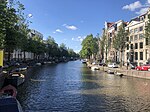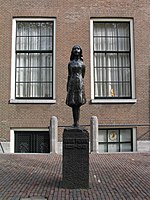Netherlands Media Art Institute

The Netherlands Media Art Institute (NIMk) (Nederlands Instituut voor Mediakunst in Dutch) was an international institution based in Amsterdam focusing on the presentation, research and collection of Media Art. Previously known as MonteVideo, the institute was founded in 1978 by René Coelho as one of the first Dutch exhibition spaces and production facilities for artists working and experimenting with art and new technologies. NIMk played a role in exhibiting, disseminating and researching new technologies in media art. Its catalogue comprised more than 2000 works, ranging from installations, video performances, software-based and internet art, from recognised international artists such as: Marina Abramović, Gary Hill, Juan Downey, Dennis Oppenheim, Marcel Odenbach. Also a large collection of Dutch artists' works and documentation of performances could be viewed in its mediatheque, among them are Livinus van de Bundt, Bill Spinhoven, Bert Schutter, Han Hoogerbrugge, Bas Jan Ader, Daniel Brun, Guido van der Werve and Erwin Olaf.The museum ceased operations on 31 December 2012 due to discontinuation of funding from the Dutch Ministry of Education, Culture and Science. Some of its tasks and collection were absorbed by the LIMA media art platform in Amsterdam.
Excerpt from the Wikipedia article Netherlands Media Art Institute (License: CC BY-SA 3.0, Authors, Images).Netherlands Media Art Institute
Sint Andrieshofje, Amsterdam Centrum
Geographical coordinates (GPS) Address Website Nearby Places Show on map
Geographical coordinates (GPS)
| Latitude | Longitude |
|---|---|
| N 52.371388888889 ° | E 4.8844444444444 ° |
Address
Grachtengordel van Amsterdam
Sint Andrieshofje
1016 EV Amsterdam, Centrum
North Holland, Netherlands
Open on Google Maps










